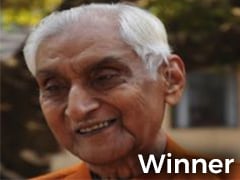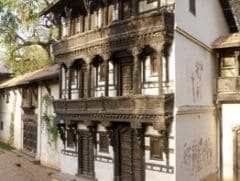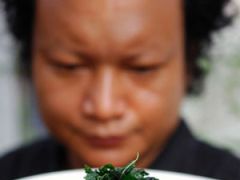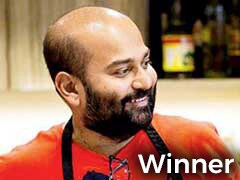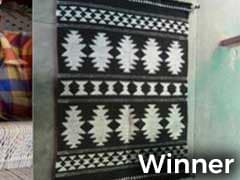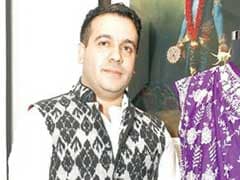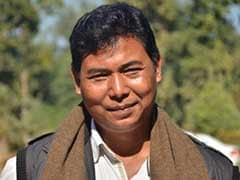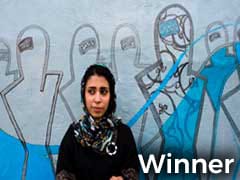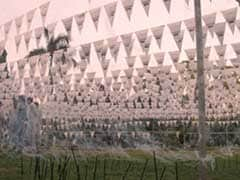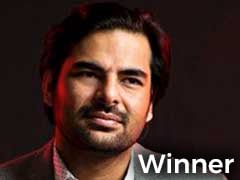
- Home/
- Finalists
Meet The Category-Wise Finalists For The Art Spectrum Awards 2017
Great Collections


Kiran Nadar
Kiran Nadar is an ardent art collector, philanthropist, and founder of the Kiran Nadar Foundation. After educating herself about Indian art history, she delved into art collecting and established the Kiran Nadar Museum of Art. As the first philanthropic private museum in India, the role is to give the general public access into a world of art usually reserved for the elite. She also plays a pivotal role in the architectural and aesthetic domains of the Shiv Nadar Foundation’s many initiatives. As a representative of this Foundation, she has collaborated with the Rajiv Gandhi Foundation to facilitate the education of the Dalit Muslim children in Uttar Pradesh. She is a member of the educational and cultural institution, Rasaja Foundation.


Jagdish Mittal
Jagdish Mittal is the Principal Trustee of the Jagdish and Kamla Mittal Museum of Indian Art, located in Hyderabad. The Mittal’s gifted their unique collection of Indian art in 1976, which they had amassed over sixty years to the museum which is a public trust. The collection, which spans art works and crafts from the 1st century B.C. to 1900 A.D., specializes in miniature paintings from the regions of Bengal, Gujarat, Rajasthan, Central India, Southern India and more. It consists of approximately 2000 objects including diverse visual artefacts like terracottas, wood carvings, manuscripts, Islamic calligraphy, metalware, and textiles. Mr. Mittal is an eminent scholar on Indian art and was awarded the Padma Shri in 1990.


Mr. & Mrs. Sarabhai
The Calico Museum of Textiles was handed over to the Sarabhai Foundation, a non-profit organization set up with the intention of promoting the study and research of science, art, and literature, jointly founded by Mr. Ambalal & Mrs. Sarladevi Sarabhai, in 1982. After being run by the Calico Mills, the Museum’s collection, being cited as a National Heritage, was shifted to the Shahibag premises of the Sarabhai Foundation. Apart from the collection of textiles, the Sarabhai Foundation has a collection of various other art works such as Jaina manuscripts, sacred bronze figurines from Southern India, and miniature paintings. The foundation has come to specifically concern itself with the preservation and promotion of the cultural heritage of India.
Sensation: Culinary Arts


Bawmra Jap
Bomra’s is a restaurant in Candolim, Goa created by Bawmra Jap who is also the head chef. Originally from Northern Burma, he left the country to train as a chef in London. The food that Bomra’s serve could perhaps be best described as South-East-Asian-inflected modern cuisine. Bawmra has taken his rich Burmese heritage, modernized and refined it. The food has a distinct Burmese soul but draws on and fuses influences from nearby regional cuisines of China, India, Laos and Thailand. In a short time, Bomra’s has become quite a phenomenon. The dishes make use of Goa’s glorious local and fresh produce. Furniture, lighting and art produced by local artisans combine perfectly to create a unique setting.


Thomas Zacharias
Thomas Zacharias began his culinary journey in his grandmother’s kitchen in Kerala. After graduating from the Culinary Institute of America (CIA) in New York, he stayed and worked at the three-star Michelin seafood restaurant, Le Bernardin. After finding his way back to India, he joined Olive Bar & Kitchen where he spent three years managing the kitchen operations. The inspirations from his gastronomic travels through India’s various regions, the bounty of the Mumbai markets, and his grandmother's kitchen all reflect in the menu at The Bombay Canteen. He focuses on recreating traditional recipes using local seasonal ingredients, showcased in a contemporary form. The kitchen presents the classic yet unexplored charm of India’s diverse regions, marrying them expertly with familiar flavors.


Aditya Raghavan
A cheesemaker who was a physicist in his past life, Aditya Raghavan is motivated by discovery, technique, and understanding when it comes to food. Working in farms, he learned the crucial details of cheese making and is now a consultant with a roster of several businesses. In his gastronomic tours he connects people to rustic, grassroots ideas of food. He co-founded The Danda Food Project with Anandita Kamani, which shares their love and passion for cooking, while trying to push the envelope on curated dining experiences. Addie runs food tours in the northeast of India where each tribe has its own food culture. Tours include learning about farming traditions, and connection to the land through folk-tales, dances, and art.
Creation: Craft Arts


Aneeth Arora
Aneeth Arora is a fashion designer who is a textile graduate from the National Institute of Design, Ahmedabad and a fashion graduate from National Institute of Fashion Technology, Mumbai. She launched her Delhi based label Péro in 2009. She was the winner of the 2011 British Fashion Council’s Young Fashion Entrepreneur Award. Her label plays beautifully with layers, prints, and textiles to create the perfect blend of designs reflecting international aesthetics with the use of local materials and skills. With an emphasis on sustainability, she launched Péro Upcycle in 2015, a service in which Péro artisans breathe new life into clients’ clothing by applying embroidery and embellishments to them in her distinctive style.


Khamir
Khamir is a platform for the promotion of crafts, heritage and cultural ecology of the Kachchh region of Gujarat. It was instituted after the earthquake of 2001, as a space for engagement and development of Kachchh's rich creative industries. A joint initiative of Kachchh Nav Nirman Abhiyan & the Nehru Foundation for Development, Khamir strive to create a democratic and empowering space, where a range of stakeholders can exchange ideas, collaborate, and work toward a shift in consumer perspectives while raising the cultural value placed on crafts. This community is versatile, crafting woven textiles, leather and woodwork. Weavers are closely linked socio-economically with their local clients. Khamir’s vision is of a vibrant, sustainable Indian craft sector.


Ashdeen Lilaowala
Ashdeen Lilaowala graduated in Textile Design from the National Institute of Design. He launched his eponymous label ASHDEEN in 2012, specializing in hand embroidered sarees. ELLE magazine voted him as “The hottest design talent of 2013” and awarded him for his excellence in reviving embroidery. With the Parzor Foundation he conducted a detailed research project on Parsi Embroidery for the Ministry of Textiles. He has written diverse travel and craft stories on the weavers of Varanasi, jhooti makers of Patiala, block printing in Jaipur and Parsi food in Mumbai that have been published in ELLE, Marie Claire and Travel+Leisure magazines.
Connection: Performing Arts


Gati Dance Forum
Gati Dance Forum is a pioneering arts initiative that was founded in response to the glaring absence of opportunities and infrastructure for independent dance in India, consistently searching for avenues to create a sustainable environment for the development of contemporary dance. Conceived and run by dance professionals, Gati is a model path-breaking community initiative, committed to a vibrant engagement with contemporary dance. Its activities have grown from monthly workshops between like-minded dancers into a body of pioneering and innovative projects that attempt to address areas as diverse as pedagogy, creation, research, outreach, & arts advocacy and policy. Since 2013, the Foundation has been annually supporting young dancers and choreographers at residency programs at the Gati Summer Dance Residency.


Ramakrishnan Ramanathan
Ramu Ramanathan is an Indian playwright-director with many acclaimed plays to his credit. He was editor of PT Notes, a monthly theatre newsletter produced by Prithvi Theatre in Mumbai for ten years. He also co-edited e-STQ (Seagull Theatre Quarterly), and has written columns on theatre for national dailies. In addition to being counted as one of the best playwrights of today, Ramu is also the editor of PrintWeek India and Campaign India magazines and has been associated with the printing industry for 30 years. He has conducted innumerable workshops and lectures, in which he has tried to reinstate the ideals of good taste, decent humor, intelligence, and above all, progressive values.


Sukracharjya Rabha
Sukracharjya Rabha learned the art of theatre initially in workshops on theatre direction and design at Guwahati. He further trained under Shri Kanhailal and Smt Sabitri for two years and assisted in the workshop productions. He founded his theatre group, Badungduppa, a rural based theatre centre at his village in 1998 and made a mark as a young talent early in life. He has directed 12 plays in Rabha, Bodo and Nepali languages. In addition to workshops under the project The Ritual in Theatre, jointly by Dayna Martinez Moraless in collaboration with Theatre Embassy, the Netherlands, he regularly organizes workshops for rural artists and runs a theatre festival named ‘Under The Sal Tree Festival’ annually with his group.
Breaking New Ground


Desire Machine Collective
Desire Machine Collective comprises artists Sonal Jain and Mriganka Madhukaillya. Their work broadly deals with the political, social, and psychological ramifications of capitalist power structures through a negotiation amongst art, environmental science, architecture, and urban planning. They have created alternate spaces for contemporary art practices by renovating and bringing to life dysfunctional places, the most prominent of them being Periferry, a disused ferry on the Brahmaputra river functioning as an artists’ laboratory to enable dialogue through workshops, residencies and symposiums. Committed to activating public spaces, the Collective undertakes durational projects to create public structures that enable the local residents to interact with them and make for themselves new interpretations of the history and future of perishing spaces.


Shamsia Hassani
Shamsia Hassani is a graffiti artist and co-founder of Berang Art Organization, a collective that promotes contemporary art in Afghanistan through diverse programs, workshops, seminars, and exhibitions. Her work exhibited widely internationally, Hassani was named one of Foreign Policy Magazine's top 100 global thinkers. She sees graffiti as a means of “spraying over the memories of war”. A pioneer in Kabul’s contemporary art scene, Hassani works to establish annual graffiti workshops across the country encouraging art over war, and simultaneously makes a conscious effort to change the way society views strong and opinionated Muslim women. The idea behind her work is introduce art to people in a geography where galleries are sparse by using public spaces.


Awami Art Collective
Awami Art Collective (AAC) was established in 2015 by a group of artists, academics and activists in response to constraints in cultural spaces imposed due to security issues post the attack on a children’s school in Peshawar, Pakistan. AAC’s public art interventions are directed at emphasizing the need for peaceful coexistence as well as cultivating appreciation for the cohabitation of diverse cultures. They attempt to have a non-hierarchical collaboration with the public directed in the service of promoting public art as an interactive medium to engage the citizen/viewer in a dialogue on violence and extremism to sensibly navigate the country’s crisis-laden politics.
Transformation: Visual Arts


Shilpa Gupta
Shilpa Gupta was born in Mumbai where she received a BFA in sculpture from the Sir J. J. School of Fine Arts in 1997. Her mediums range from manipulated found objects to video, interactive computer-based installation and performance. Gupta is interested in human perception and how information, visible or invisible get transmitted and internalized in everyday life. Gupta is constantly drawn to how objects get defined, be it places, people, experiences, etc. Her work engages with the zones where these definitions get played out, be it borderlines, labels, and ideas of censorship and security. She is pioneering new media and conceptual artist from South Asia who has influenced several of her generation.


Waqas Khan
Waqas Khan is an artist from Pakistan currently based in Lahore. Khan creates large-scale minimalist drawings that can be best described as “entanglements”, with large interconnected webs, spirals, and circles of ink made up of innumerable dashes and dots. With his contemplative work, Khan endeavours to create an interface and an interaction between traditional Islamic art and contemporary art. Trained at the National College of Arts in Lahore, one of Waqas Khan’s influences are the delicate techniques used in the figuration of Mughal miniature paintings. This negotiation stems in part from his interest in literature, but primarily from his engagement with Sufi philosophy, which he incorporates into his work through his interest in Sufi scripting.


Rana Begum
Rana Begum is a British Bangladeshi artist who studied at Chelsea College of Art and Design. Lodged between optical art and minimalism, Rana’s works draw their inspiration from repetitive geometric patterns found within Islamic art and urban architecture. Her work is crystalline, simple, pure, and hard-edged. She takes her experience of the vibrant collage of the urban environment and concentrates it through a process of refinement and filtration. Her work imposes order and system by abstracting those moments of accidental, aesthetic wonder with a multi-perspective quality. Each mini-color field might be imagined as representing a momentary visual memory, the remembrance of a color seen in a specific place and at a specific time, reified, becoming a perfect version of itself.




